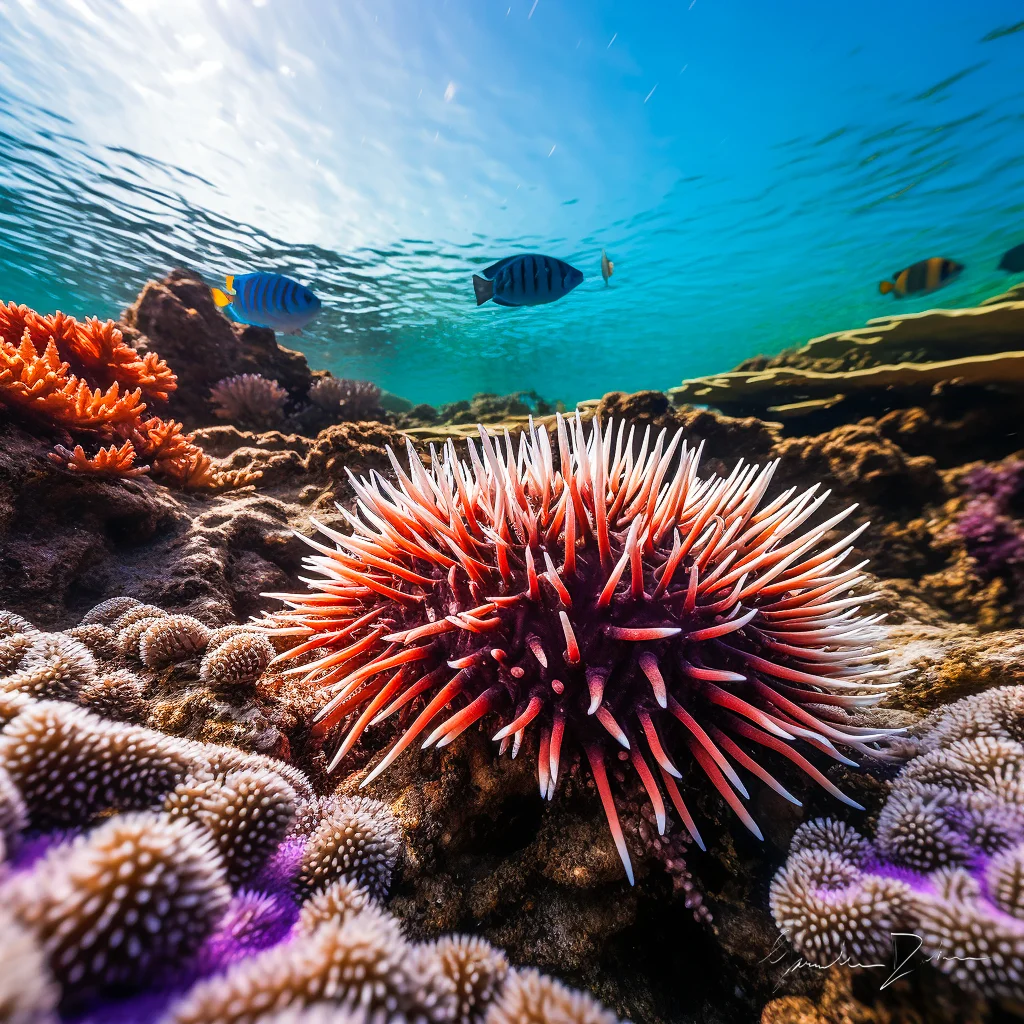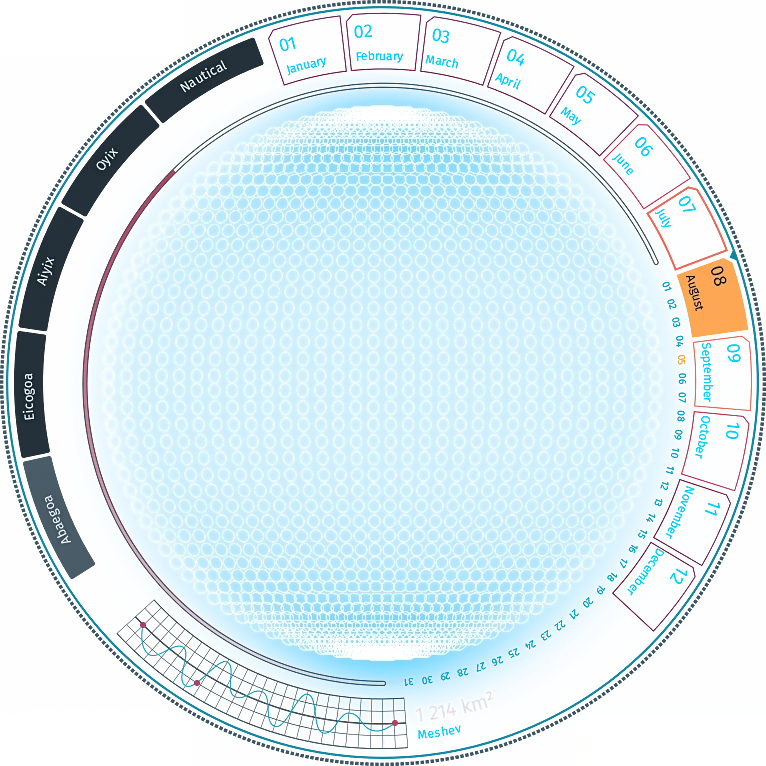Glassy Deep
Geography
The Glassy Deep is an expansive aquatic region located off the southeastern coast of Parina and Ranse. It covers an area of over 250,000 square miles, making it one of the largest bodies of water in the world. The seafloor of the Glassy Deep consists of vast plains of coral and seagrass, interspersed with deep trenches and underwater mountain ranges. The water itself is known for its striking clarity and vibrant blue-green hue.
Ecosystem
The Glassy Deep is home to a diverse array of marine life. Fields of colorful coral provide shelter for thousands of fish species. Higher up in the water column, large predatory fish like tuna and sharks hunt smaller fish and squid. On the seafloor, species like sea cucumbers, sea stars, and crabs thrive amid the coral. The ecosystem is anchored by the coral reefs, which support much of the life in the Glassy Deep through the food and habitat they provide.
The ecosystem of the Glassy Deep experiences seasonal shifts tied to monsoon patterns in the region. In the summer wet season, nutrients wash into the Glassy Deep from coastal rivers, fueling blooms of phytoplankton. This phytoplankton boom provides ample food for small fish and invertebrates. In the dry winter season, food becomes more scarce and predation increases, with larger fish moving into the coral reefs to hunt. The coral itself reproduces en masse in early spring, with colorful spawning events taking place throughout the Glassy Deep.
Localized Phenomena
The Glassy Deep is prone to occasional severe tropical storms, which can damage coral reefs and stir up sediments from the seafloor. Fast-moving currents between seamounts in the Glassy Deep have also been known to produce large, swirling eddies that can persist for months. In some areas, natural gas seeps from the seafloor, creating eerie bubble streams that draw in unique deep-sea organisms. Of particular note is the Teisiphan Chasm, a massive underwater trench plunging over 10,000 feet into pitch darkness. All attempts by human explorers to penetrate its depths have failed. The extreme pressure and lack of light in the Teisiphan Chasm have kept its secrets hidden.
Climate
The climate of the Glassy Deep is tropical and warm throughout the year, with periods of monsoon rains alternating with sunny, dry conditions. Water temperatures average 75-80°F on the surface and 40-50°F at deeper depths. Salinity and clarity remain high regardless of depth or season, contributing to the "glassy" appearance. Sudden storms can whip up waves as high as ships on the surface, while the depths remain calm and undisturbed.
Fauna & Flora
The coral reefs of the Glassy Deep are home to over 500 species of vibrant coral, ranging in color from crimson to azure to sunburst orange. The hardy fire coral provides shelter for fish and invertebrates, while the intricate lace coral waves gracefully in the currents. Fields of bright green seagrass blanket the sandy seabed, providing food for sea turtles and habitat for rays. Giant kelp forests rise from rocky areas near the surface, towering hundreds of feet high. Microscopic phytoplankton drift through the sunlit waters, forming the base of the marine food web.
sea turtles; manta rays; dolphins; whales; giant clams; sea snakes; nautiluses; frigatebirds; tropicbirds; clownfish; parrotfish; angelfish; tuna; harlequin shrimp; mahi mahi; red snapper; oilfish; amberjack; sharks; squid; sea stars; crabs; butterflyfish; damselfish; eels; seahorses; octopuses; anemones; jellyfish; sea urchins; sand dollars; spiny lobsters; hermit crabs; pistol shrimp; crown-of-thorns starfish; sea lilies; sponges; cuttlefish; razorfish; conches.
fire coral; lace coral; seagrass; giant kelp; phytoplankton; crimson coral; azure coral; sunburst orange coral; rainbow algae; purple sponge; sea ferns; bubble algae; green macroalgae; sargassum; tube worms; black mangroves; needle rush; turtle grass; ribbon weed; hydroids; sea lettuce; feather boa kelp; christmas tree worms; stalked barnacles; acorn barnacles; bryozoans; sea palms; halimeda; caulerpa; water sprites.



Natural Resources
The coral reefs support productive fisheries for food fish like mahi mahi and red snapper. Massive schools of oilfish and amberjack provide a bounty for fishermen. Commercial fisheries harvest tuna, mackerel, grouper, and other fish species sustainably. The seagrass meadows are home to valuable shellfish like clams, oysters, and abalone. Deposits of gold, silver, and rare aquatic gems can be found on the seafloor and in the underwater mountains. The kelp forests and phytoplankton provide renewable sources of algae.
History
The Glassy Deep has been inhabited by the Musai for centuries. They have traditionally protected the waters from overfishing and exploitation. The first human mapping expeditions took place many generations ago, bringing tales of the Glassy Deep's beauty and abundant marine life back to shore. Conservation efforts began in recent decades to preserve the delicate coral ecosystems.
Tourism
The pristine waters and abundant marine life of the Glassy Deep make it a prime tourist destination. Snorkelers and scuba divers come to experience the coral reefs firsthand. Chartered fishing boats and ecotour cruises bring visitors hoping to spot whales, dolphins, sea turtles and other wildlife. Resort islands dot the outer ring of the Glassy Deep, attracting vacationers who enjoy water sports, seafood and sunshine. Conservation tourism helps fund protection efforts.




This place sounds so prettyyyyyy, I'd love to visit :D
Thank you! And thank you so much for helping <3